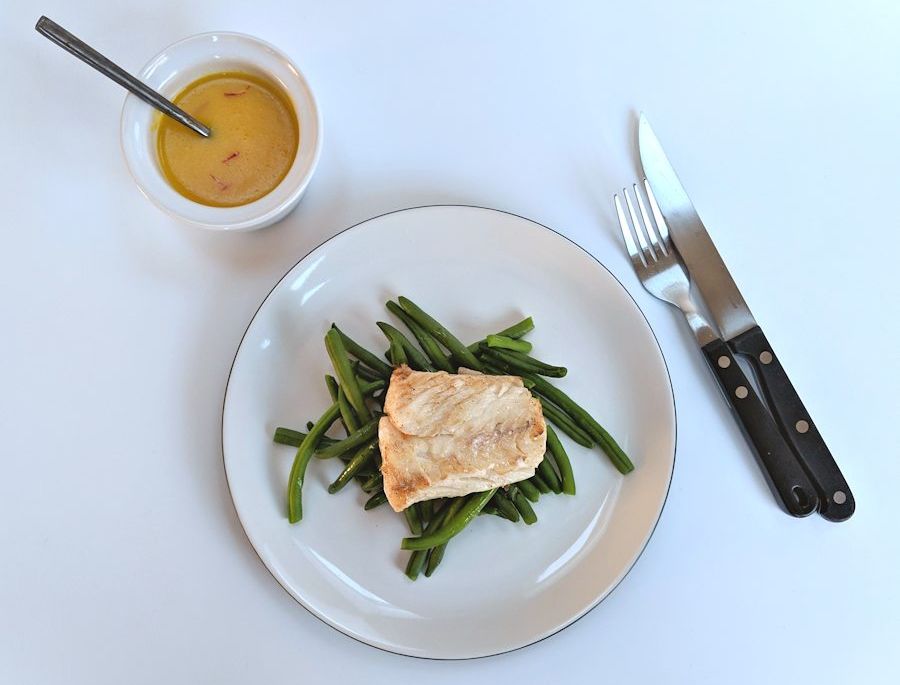Slow roasted haddock or cod fillet? It means the fish is baked in the oven at a very low temperature. It means perfect baked fish every time. It means never overcooking. It means easy. It means healthy. Need I say more?

Another low temperature recipe or, as The Weather Man describes it: cooking in the warm place. This time fish, inspired by a restaurant meal where I was served the most unbelievably flaky, slimy and wet piece of cod; it looked raw and felt and tasted cooked and wonderful.
By way of explanation, ‘slimy’ is in my view the best complement you can pay a cooked piece of fish. Fighting the hateful word ‘moist’, I aim to describe tasty meat as juicy but it doesn’t really apply to fish. Slimy in my books means that it flakes easily, looks like it’s dripping with moisture (the noun is okay) but it isn’t, slips into the mouth like lightly oiled and has not a touch of dryness or stringiness. Slimy. Nailed it.
We all know (at least those of us who do know a thing or two about fish) that stringy, overcooked and dry are the three damning words when combined with fish. Deep frying seals it in the horribly unhealthy but disgustingly tasty cocoon of batter; no drying out possible unless left in the oil for hours. Searing is fine when you’re cooking tuna or thin fillets; it won’t quite cut it with thicker salmon fillets when you just don’t want the translucent middle. Grilling is a hit and miss; baking is sensible and what works even better is low temperature baking.

You need to sear it unless you’re serving the fish with sauce or you don’t care for the appetisingly scorched skin. The only potential issue is that the fish will not be piping hot, having spent its time in nearly ambient temperature. Two approaches that are unfortunately mutually exclusive, at least until I or someone cleverer works out the solution: sear beforehand to make it look good, or sear afterwards to serve it hot but risking the fillet falling to bits a little. The choice is yours; I prefer the pretty lukewarm, The Weather Man the piping and messy.